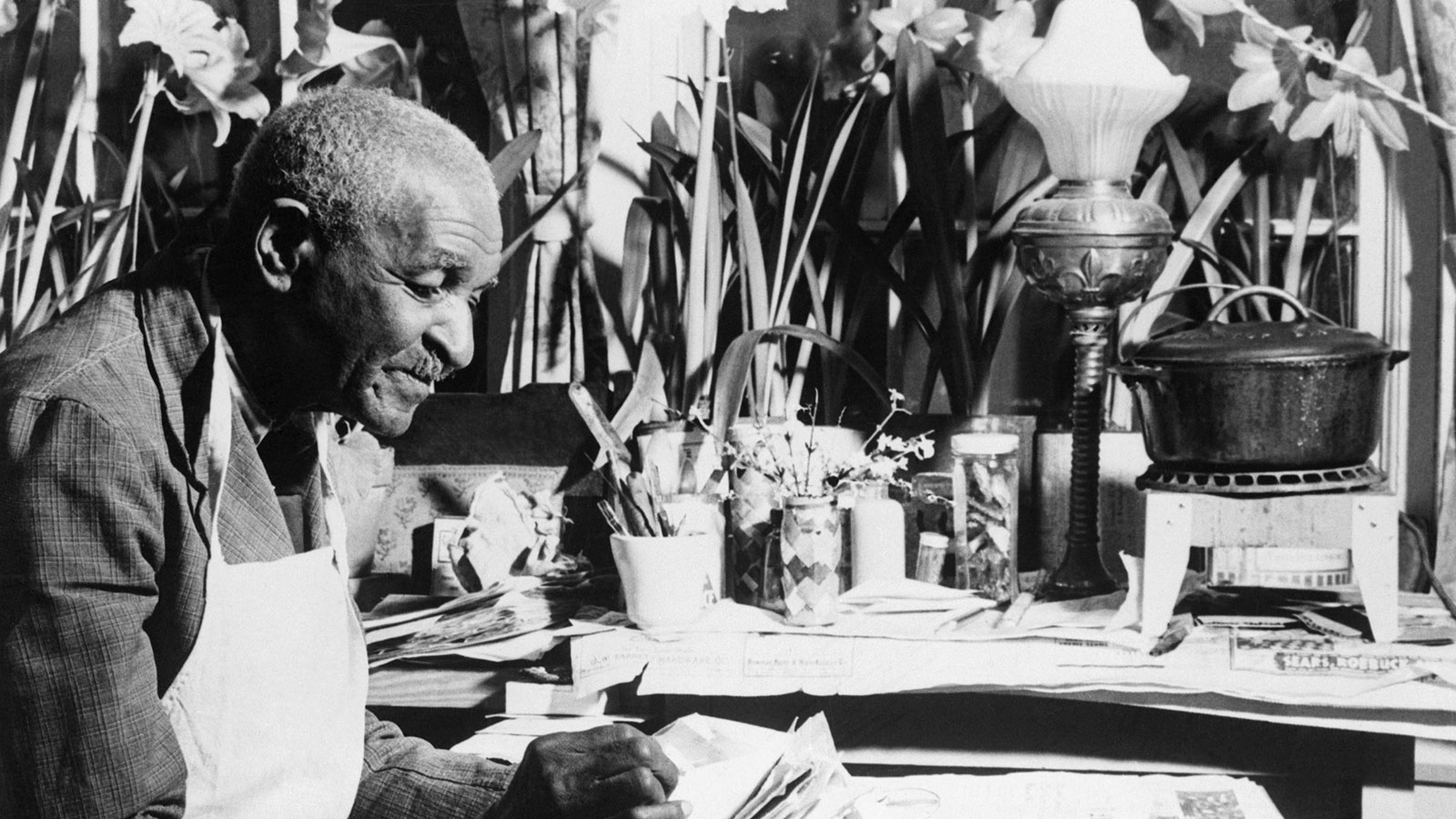George Washington Carver: The Botanist and Innovator
Early Life and Education: George Washington Carver was born around 1864 in Diamond, Missouri, during the final years of the Civil War. Born into slavery, he faced significant adversity, but his thirst for knowledge and passion for plants would eventually lead him to become one of the most prominent figures in agricultural science.
Carver’s journey started when he left the farm where he was born to pursue an education. He faced numerous challenges as an African American seeking education in the late 19th century. Carver’s relentless determination led him to Simpson College in Iowa and later to Iowa State Agricultural College (now Iowa State University), where he earned a bachelor’s degree in agriculture in 1894 and a master’s degree in 1896.
Family Life: George Washington Carver’s exact family background is unclear due to the circumstances of his birth into slavery. He was later raised by the white couple Moses and Susan Carver. The Carvers supported George’s education, recognizing his intellect and potential.
Inventions and Achievements: George Washington Carver’s groundbreaking work in agriculture and botany revolutionized farming practices and brought economic stability to the Southern United States. His research focused on soil conservation, crop rotation, and alternative cash crops to cotton, such as peanuts and sweet potatoes.
Contrary to popular belief, Carver did not invent peanut butter. However, he did promote and popularize peanuts as a valuable crop. His work involved developing hundreds of innovative uses for peanuts, including peanut oil, cosmetics, dyes, and even plastics.
Carver’s research extended beyond peanuts to other crops. He advocated for crop rotation and soil improvement, promoting sustainable and diversified farming practices. Carver became known as the “Wizard of Tuskegee” for his transformative agricultural innovations.
Legacy and Honors: George Washington Carver’s legacy extends far beyond his time. He became the head of the Agriculture Department at the Tuskegee Institute (now Tuskegee University) in Alabama, where he worked for nearly five decades.
Carver received numerous accolades for his contributions, including invitations to speak before Congress and collaborations with prominent industrialists like Henry Ford. In 1941, President Franklin D. Roosevelt dedicated $30,000 to establish the George Washington Carver National Monument in Diamond, Missouri, making it the first national monument dedicated to an African American and a non-president.
Comparison with Marcellus Gilmore Edson: Contrary to Marcellus Gilmore Edson, who received a patent for an early process of milling roasted peanuts and creating a spreadable paste in 1884, George Washington Carver did not invent peanut butter. Carver’s work focused on promoting the cultivation and versatile uses of peanuts, while Edson’s patent was more specific to the process of making a spreadable peanut product.
In summary, George Washington Carver’s contributions to agriculture and botany, especially in promoting peanuts and alternative crops, have left an indelible mark on American history. His innovations continue to influence sustainable farming practices and serve as a testament to the transformative power of scientific inquiry and dedication





